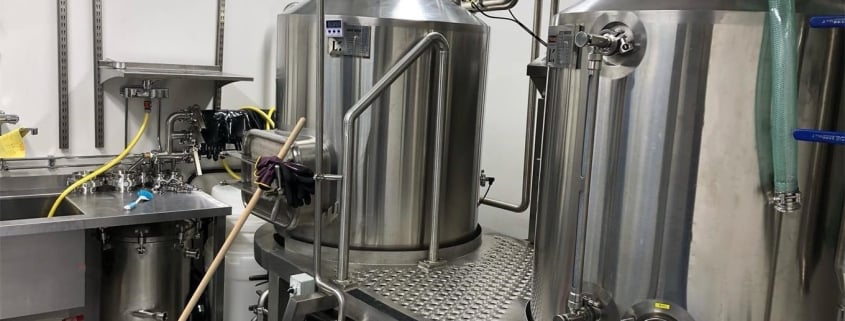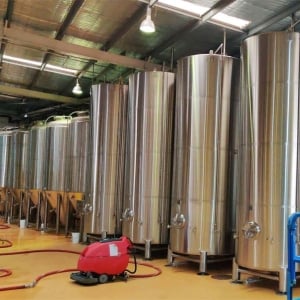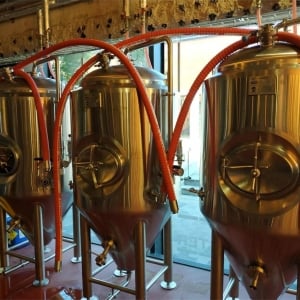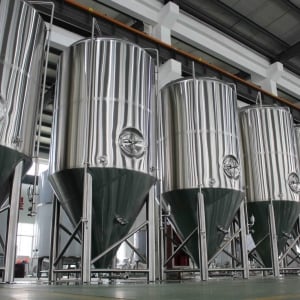Small Brewery Equipment
Starting a small brewery requires a significant investment in equipment, and understanding the various components involved is crucial. Small brewery equipment encompasses a wide range of tools and machinery necessary for the brewing process, from mashing and lautering to fermentation and packaging.
The most essential pieces of small brewery equipment include:
- Brewhouse: This is where the magic happens. The brewhouse typically consists of a mash tun, lauter tun, brew kettle, and a hot liquor tank.
- Fermentation Vessels: After the wort is boiled and cooled, it’s transferred to fermentation tanks where yeast is added to convert sugars into alcohol.
- Brite Tanks: These tanks are used for conditioning and carbonating the beer before packaging.
- Packaging Equipment: This includes a keg filler, bottle filler, and other equipment necessary for getting your beer into kegs, bottles, or cans.
As a small brewery owner, you’ll need to carefully consider factors such as your projected output, available space, and budget when selecting the right equipment. Let’s dive deeper into the world of small brewery equipment!
The Brewing Process and Equipment Guide
The brewing process involves several distinct steps, each requiring specific equipment. Let’s take a closer look at the key equipment needed for each stage:
| Brewing Stage | Equipment |
|---|---|
| Mashing | Mash Tun, Hot Liquor Tank, Malt Mill |
| Lautering | Lauter Tun |
| Boiling | Brew Kettle, Whirlpool |
| Fermentation | Fermentation Vessels, Glycol Chiller |
| Conditioning | Brite Tanks |
| Packaging | Keg Filler, Bottle Filler, Canning Line |
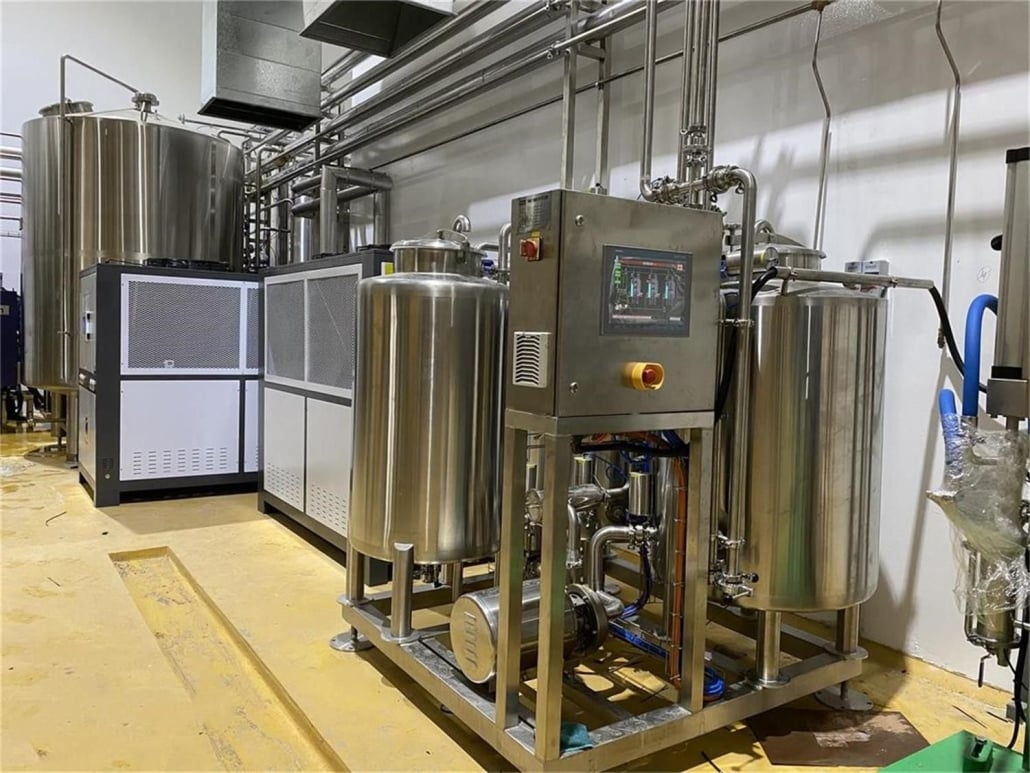
Types of Small Brewery Equipment
Small brewery equipment can be categorized based on the brewing process and the specific function it serves. Here’s a table outlining the various types of equipment:
| Equipment Type | Purpose |
|---|---|
| Mash Tun | Converts milled grain into a sugary liquid called wort |
| Lauter Tun | Separates the wort from the spent grain |
| Brew Kettle | Boils the wort with hops to create the desired flavor profile |
| Fermentation Vessels | Facilitates the fermentation process by providing a controlled environment |
| Brite Tanks | Conditions and carbonates the beer before packaging |
| Packaging Equipment | Fills kegs, bottles, or cans with the finished beer |
| Auxiliary Equipment | Includes pumps, heat exchangers, and other supporting equipment |
The Brewing Process Explained
To better understand the role of each type of equipment, let’s walk through the brewing process step-by-step:
- Milling: The first step is to crush the malted grains using a malt mill. This helps expose the starches within the grains, preparing them for the next stage.
- Mashing: The crushed grains are mixed with hot water in the mash tun, where enzymes convert the starches into fermentable sugars.
- Lautering: After mashing, the sugary liquid (wort) is separated from the spent grains in the lauter tun.
- Boiling: The wort is then transferred to the brew kettle, where it’s boiled, and hops are added to impart bitterness, flavor, and aroma.
- Whirlpool: After boiling, the wort is whirlpooled to separate the hop particles and prepare it for fermentation.
- Fermentation: The cooled wort is then transferred to fermentation vessels, where yeast is added to convert the sugars into alcohol and carbon dioxide.
- Conditioning: Once fermentation is complete, the beer is transferred to brite tanks for conditioning and carbonation.
- Packaging: Finally, the conditioned beer is packaged into kegs, bottles, or cans using the appropriate packaging equipment.
Throughout this process, auxiliary equipment like pumps, heat exchangers, and glycol chillers play a crucial role in moving liquids and maintaining precise temperature control.
Small Brewery Equipment: Capacity, Spaces, Design, and Layout
When selecting small brewery equipment, it’s essential to consider factors such as capacity, available space, and overall design and layout. Here’s a table that outlines some key considerations:
| Factor | Considerations |
|---|---|
| Capacity | Determine your desired batch size and projected annual output. This will help you choose appropriately sized equipment. |
| Spaces | Assess the available space in your brewery, including ceiling height, floor layout, and access for installation and maintenance. |
| Design | Consider the overall design and ergonomics of the equipment, as well as its ease of use and maintenance. |
| Layout | Plan the equipment layout to ensure an efficient workflow, proper ventilation, and safe operation. |
| Customization | Many manufacturers offer customization options to tailor the equipment to your specific needs and preferences. |
It’s crucial to strike a balance between your brewing aspirations and the practical limitations of your facility. Working with a brewery design consultant or experienced equipment supplier can help ensure a well-planned and optimized setup.
Small Brewery Equipment Suppliers and Price Range
When it comes to sourcing small brewery equipment, there are numerous suppliers to choose from, each offering a range of products and price points. Here’s a table that lists some popular suppliers and their approximate price ranges:
| Supplier | Price Range |
|---|---|
| SS Brewtech | $10,000 – $100,000+ |
| Blichmann Engineering | $5,000 – $50,000 |
| Brewery Maker | $15,000 – $80,000 |
| Prospero | $20,000 – $150,000+ |
| Alpha Brewing Operations | $25,000 – $200,000+ |
It’s important to note that these prices can vary significantly based on factors such as equipment size, customization options, and additional features. It’s advisable to get quotes from multiple suppliers and compare not only the prices but also the quality, durability, and customer support offered.
Installation, Operation, and Maintenance
Once you’ve acquired your small brewery equipment, proper installation, operation, and maintenance are crucial for ensuring a smooth and efficient brewing process. Here’s a table that outlines some key considerations:
| Aspect | Considerations |
|---|---|
| Installation | Ensure proper site preparation, including adequate space, utilities, and ventilation. Follow manufacturer guidelines for assembly and installation. |
| Operation | Train staff on proper equipment operation, safety protocols, and cleaning procedures. Develop standard operating procedures (SOPs) for consistency. |
| Maintenance | Establish a preventive maintenance schedule for regular inspections, cleaning, and necessary repairs. Keep spare parts on hand for common wear items. |
Partnering with experienced installers and providing comprehensive training to your staff can help maximize the lifespan and performance of your small brewery equipment.
Choosing the Right Small Brewery Equipment Supplier
When selecting a supplier for your small brewery equipment, there are several factors to consider beyond just the price. Here’s a table that outlines some key criteria to evaluate:
| Criteria | Description |
|---|---|
| Quality and Durability | Assess the quality of materials, construction, and overall durability of the equipment offered. |
| Customization Options | Determine if the supplier can accommodate customizations to meet your specific needs and preferences. |
| Customer Support | Consider the level of customer support, including technical assistance, training, and availability of spare parts. |
| Lead Times | Evaluate the supplier’s lead times for delivery and their ability to meet your timeline. |
| Reputation and Reviews | Research the supplier’s reputation within the industry, and read reviews from other brewers. |
| Warranty and Guarantees | Understand the warranty and guarantees offered by the supplier, as well as their terms and conditions. |
By carefully evaluating these criteria, you can increase the likelihood of finding a reliable and trustworthy supplier who can provide the right equipment for your small brewery’s needs.
Pros and Cons of Small Brewery Equipment
Like any investment, small brewery equipment comes with its own set of advantages and limitations. Here’s a table that outlines some of the key pros and cons:
| Pros | Cons |
|---|---|
| Scalability: Small brewery equipment allows for gradual growth and expansion as demand increases. | Initial Investment: The cost of acquiring and installing small brewery equipment can be substantial. |
| Customization: Many suppliers offer customization options to tailor the equipment to your specific needs. | Space Requirements: Larger equipment may require significant space, limiting options for smaller facilities. |
| Efficiency: Modern small brewery equipment is designed for efficient operation and energy conservation. | Maintenance: Regular maintenance and cleaning are essential to ensure proper operation and product quality. |
| Flexibility: Small-scale equipment allows for experimentation and the production of a wide variety of beer styles. | Capacity Limitations: While scalable, small brewery equipment may eventually reach capacity limitations as demand grows. |
| Community: The small brewery community is close-knit, offering support and knowledge-sharing opportunities. | Learning Curve: Operating and maintaining brewery equipment requires specialized knowledge and training. |
It’s essential to carefully weigh these pros and cons against your specific goals, budget, and resources to determine the most suitable path for your small brewery.
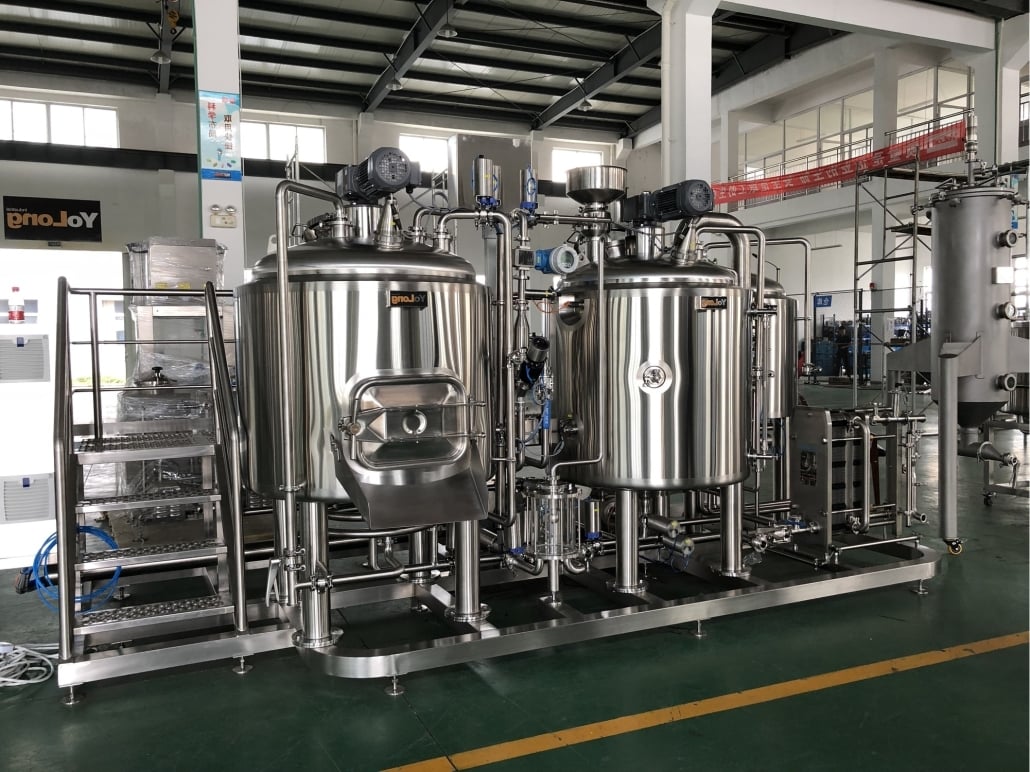
FAQ
Q: What is the minimum equipment required to start a small brewery? A: The essential equipment for a small brewery includes a mash tun, lauter tun, brew kettle, fermentation vessels, brite tanks, and packaging equipment (keg filler, bottle filler, or canning line).
Q: How much space do I need for a small brewery? A: The space required for a small brewery can vary greatly depending on the equipment size and layout. As a general guideline, plan for at least 1,000 square feet for a basic 3-barrel (bbl) brewhouse and additional space for fermentation, packaging, and storage.
Q: Can I buy used small brewery equipment? A: Yes, buying used equipment can be a cost-effective option, but it’s important to thoroughly inspect the equipment and ensure it’s in good working condition. Many suppliers also offer refurbished or pre-owned equipment.
Q: What is the typical lifespan of small brewery equipment? A: With proper maintenance and care, high-quality small brewery equipment can last 10-15 years or more. However, some components may need to be replaced more frequently due to wear and tear.
Q: How do I choose the right equipment size for my small brewery? A: Consider your projected output, growth plans, and available space. It’s generally recommended to start with a slightly larger system than your initial needs to accommodate future growth.
Q: Can I expand or upgrade my small brewery equipment as my business grows? A: Many small brewery equipment suppliers offer modular systems that allow for expansion and upgrades as your business grows. However, it’s essential to plan for future growth and ensure your initial setup can accommodate expansions.
Q: What are the typical maintenance requirements for small brewery equipment? A: Regular cleaning, inspection, and preventive maintenance are crucial. Common maintenance tasks include cleaning tanks, replacing gaskets and seals, and checking for wear on pumps and other moving parts.
Q: How do I ensure the quality and consistency of my beer with small brewery equipment? A: Proper equipment operation, temperature control, and adherence to standard operating procedures are essential for consistent beer quality. Additionally, investing in quality control equipment and implementing strict cleaning and sanitation protocols can help maintain consistent results.

